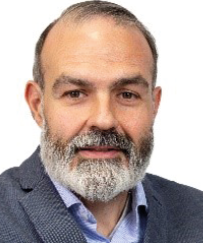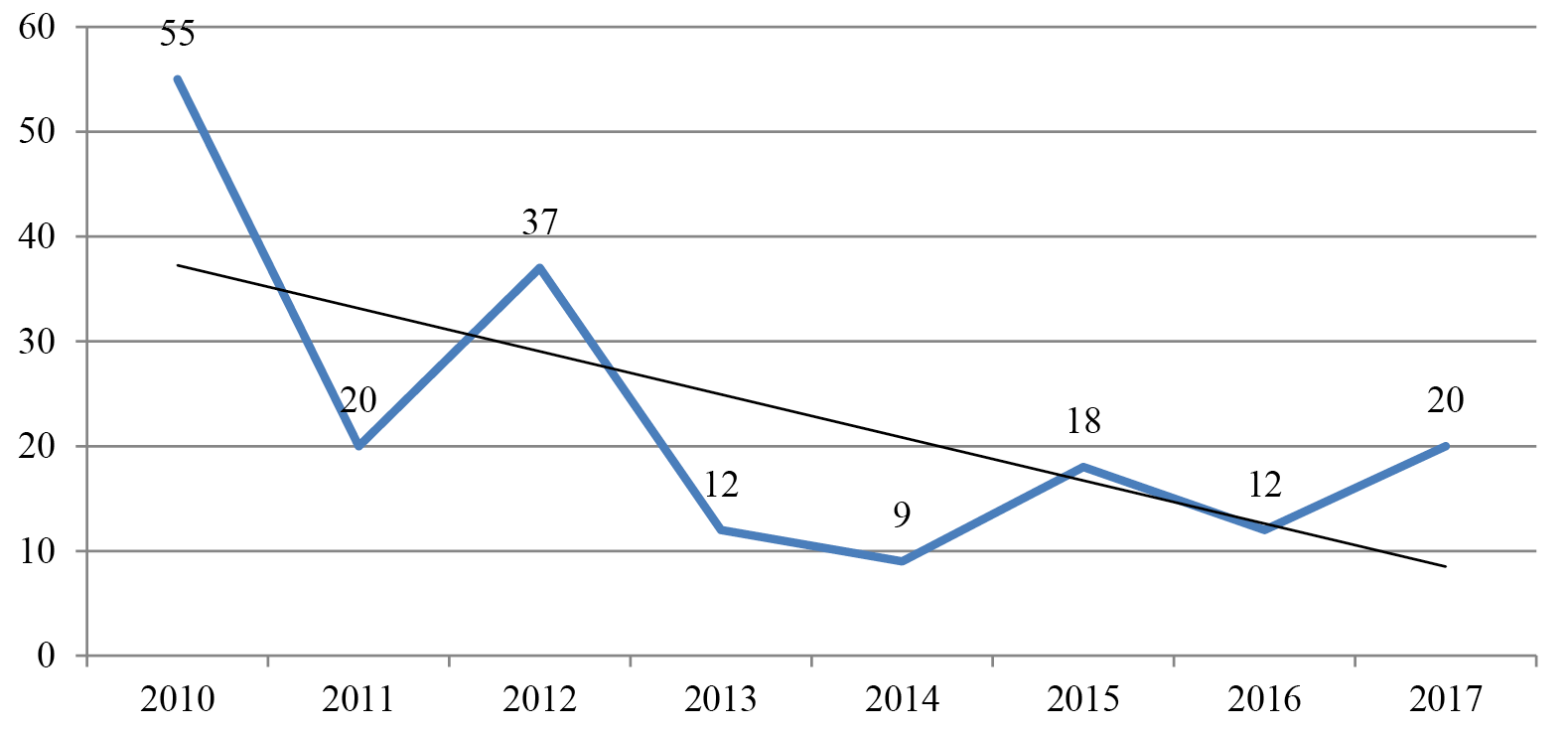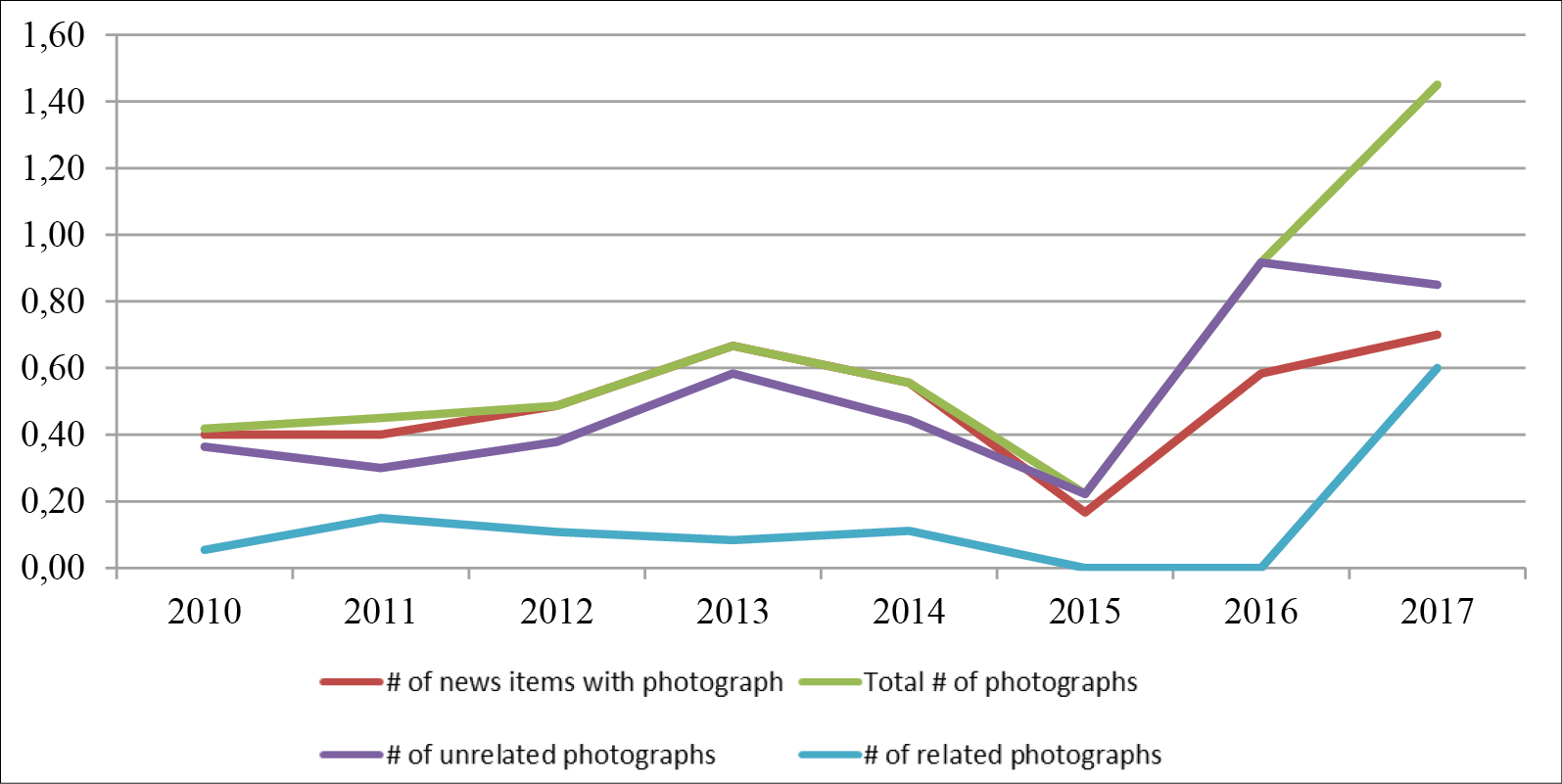5. Bibliographic references
Acosta, F. J. et al (2019).«Suicide Coverage in the Digital Press Media: Adherence to World Health Organization Guidelines and Effectiveness of Different Interventions Aimed at Media Professionals», Health Communication, pp. 1-10. doi: 10.1080/10410236.2019.1654176.
Beam, R.A., John, S.L., Yaqub, M.M. (2017). We don’t cover suicide … (Except when we do cover suicide). Journalism Studies 19: 1447–1465.
Boasberg, J. et al (2019). «Marco general de los medios en España», Duke Law Journal, 1(1), pp. 1-13. doi: 10.1017/CBO9781107415324.004.
Boudry, V. (2008). Suicide story frames contribute to stigma. Newspaper Research Journal 29(2): 55–69.
Camacho Markina, I. y Santos Díez, M. T. (2020). «El reflejo de las recomendaciones de la OMS para la prevención del suicidio en la prensa española», Estudios sobre el Mensaje Periodístico, 26(3), pp. 903-913. doi: 10.5209/esmp.65239.
Carmichael, V. y Whitley, R. (2019).«Media coverage of Robin Williams’ suicide in the United States: A contributor to contagion?», PLOS ONE, 14(5). doi: 10.1371/journal.pone.0216543.
Choi, D.-H. y Noh, G.-Y. (2020).«The influence of social media use on attitude toward suicide through psychological well-being, social isolation, and social support», Information, Communication & Society, 23(10), pp. 1427-1443. doi: 10.1080/1369118X.2019.1574860.
Choi, Y. J. y Oh, H. (2016).«Does Media Coverage of a Celebrity Suicide Trigger Copycat Suicides?: Evidence from Korean Cases», Journal of Media Economics, 29(2), pp. 92-105. doi: 10.1080/08997764.2016.1170020.
CWHOcore (2017).Rating & Planning - Media Rating. Disponible en: https://www.cWHOcore.com/esl/Productos/Ratings-and-Planning/Media-Ratings.
Díaz, M. y Mellado, C. (2017). «Agenda y uso de fuentes en los titulares y noticias centrales de los medios informativos chilenos. Un estudio de la prensa impresa, online, radio y televisión», Cuadernos.info, 40(40), pp. 107-121. doi: 10.7764/cdi.40.1106.
Díaz-Campo, J., Chaparro-Domínguez, M. Á y Rodríguez-Martínez, R. (2018). «Los atentados terroristas de Barcelona y Cambrils en la prensa online. Tratamiento informativo en El periódico, El país y The guardian». Profesional de la Información, 27(6), 1358-1367.
Díaz-Campo, J.; Góméz-García, S.; Segado-Boj, F. J. y Remacha-González, L. (2021) ‘Ética periodística y Covid-19: Análisis de contenido de los códigos deontológicos», en prensa
Duncan, S. y Luce, A. (2020).«Using the Responsible Suicide Reporting Model to increase adherence to global media reporting guidelines», Journalism, p. 146488492095268. doi: 10.1177/1464884920952685.
Durán, Á. y Fernández-Beltrán, F. (2020). «Responsabilidad de los medios en la prevención del suicidio. Tratamiento informativo en los medios españoles», El Profesional de la Información, 29(2). doi: 10.3145/epi.2020.mar.07.
Fink, D. S., Santaella-Tenorio, J. y Keyes, K. M. (2018).«Increase in suicides the months after the death of Robin Williams in the US», PLOS ONE, 13(2), p. 191405. doi: 10.1371/journal.pone.0191405.
Galletero Campos, B. y Saiz Echezarreta, V. (2018). «Estudio exploratorio de la calidad en el periodismo digital en Castilla-La Mancha», Barataria. Revista Castellano-Manchega de Ciencias Sociales, 24(24), pp. 173-189. doi: 10.20932/barataria.v0i24.403.
Gandy, J., Terrion, J. L. (2015). Journalism and suicide reporting guidelines in Canada: Perspectives, partnerships and processes. International Journal of Mental Health Promotion, 17(5), 249-260.
García-Gil, J. y Cortiñas-Rovira, S. (2018).«Quality of recommendations on health-enhancing physical activity in the press. Content analysis of five Spanish newspapers», Apunts. Medicina de l’Esport, 53(199), pp. 113-122. doi: 10.1016/j.apunts.2017.06.002.
Garrido-Fabián, F., Eleazar Serrano-López, A. y Catalán-Matamoros, C. (2018). «El uso por los periodistas de las recomendaciones de la OMS para la prevención del suicidio. El caso del periódico Abc», Revista Latina de Comunicación Social. La Laguna, Tenerife, 73, pp. 810-827. doi: 10.4185/RLCS-2018-1283.
Gobierno de España (2020).Sanidad publica un documento de recomendaciones a los medios de comunicación para las informaciones sobre las conductas suicidas. Disponible en: https://www.mscbs.gob.es/gabinete/notasPrensa.do?id=5006.
Herrera Ramírez, R., Ures Villar, M. B. y Martínez Jambrina, J. J. (2015). «El tratamiento del suicidio en la prensa española: ¿efecto werther o efecto papageno?», Revista de la Asociación Española de Neuropsiquiatría, 35(125), pp. 123-134. doi: 10.4321/S0211-57352015000100009.
INE (2018).Indicadores demográficos básicos. Disponible en: https://www.ine.es/metodologia/t20/metodologia_idb.pdf (Accedido: 2 de junio de 2019).
Kim, J.-H. et al. (2013). «The Werther Effect of Two Celebrity Suicides: an Entertainer and a Politician», PLoS ONE. Editado por A. Mesoudi, 8(12), p. e84876. doi: 10.1371/journal.pone.0084876.
López Redondo, I. (2012).El tratamiento del videojuego: de la prensa generalista a las revistas especializadas. Análisis comparativo de las ediciones impresas y digitales de El Páıs, El Mundo, Público y 20 Minutos. Universidad de Sevilla.
Lozano, V., Estephany, A. y Ozonas, C. P. (2017). «Análisis del tratamiento de las noticias de sucesos en los noticiarios matutinos de las televisiones privadas de Ecuador y España», Universitat Autònoma de Barcelona. Facultat de Ciències de la Comunicació.
Machlin, A, Skehan, J, Sweet, M. (2012). Reporting suicide: Interpreting media guidelines. Australian Journalism Review 34(2): 45–56.
Müller, F. (2011). «El “Efecto Werther”: gestión de la información del suicidio por la prensa española en el caso de Antonio Flores y su repercusión en los receptores.», Cuadernos de Gestión de Información, 11(1), pp. 65-7.
Muñiz-Zúñiga, V., & Fonseca-Valido, R. Á. (2017). «Uso de géneros periodísticos, valores noticia y fuentes de información en los medios de comunicación de Santiago de Cuba», Vivat Academia, 138, pp. 120-140.
Niederkrotenthaler, T, Stack, S. (2017). Media and Suicide: International Perspectives on Research, Theory, and Policy. London: Routledge.
Olivar-Julián, F.J. y Díaz-Campo, J. (2020). Jóvenes y sucesos: Tratamiento informativo en la prensa digital española. Estudios sobre el Mensaje Periodístico 26 (4), 1521-1532. doi: 10.5209/esmp.68003.
WHO (2000). «Prevención del suicidio, un instrumento para profesionales de los medios de comunicacion», Trastornos Mentales y Cerebrales Departamento de Salud Mental y Toxicomanías. Ginebra: Organización Mundial de la Salud.
WHO (2018).Suicidio. Disponible en: https://www.who.int/es/news-room/fact-sheets/detail/suicide (Accedido: 19 de marzo de 2019).
Parks, P. (2019). From sensation to stigma: Changing standards for suicide coverage in US journalism textbooks, 1894–2016. Journalism, 1464884919841920.
Peña-Fernández, S., Lazkano-Arrillaga, I. y García-González, D. (2016).«European Newspapers’ Digital Transition: New Products and New Audiences», Comunicar, 24(46), pp. 27-36. doi: 10.3916/C46-2016-03.
Pérez Pereiro, M., Chaparro Dominguez, M. Á. C. y Díaz del Campo, J.(2018). La cobertura periodística de los incendios de Galicia y Portugal de octubre de 2017: un análisis de la información de emergencia de diarios portugueses, españoles y gallegos. Estudos em Comunicação, 26(1), 197-213..
Phillips, D. (1974). The influence of suggesions on suicide; substantive and theoretical implications of the Werther effect. Am. Sociol. Rev. 39: 340–354.
Pirkis, J. et al. (2019). «Suicide Prevention Media Campaigns: A Systematic Literature Review», Health Communication, 34(4), pp. 402-414. doi: 10.1080/10410236.2017.1405484.
Potvin Kent, M. y Pauzé, E. (2018). «The Frequency and Healthfulness of Food and Beverages Advertised on Adolescents’ Preferred Web Sites in Canada», Journal of Adolescent Health, 63(1), pp. 102-107. doi: 10.1016/j.jadohealth.2018.01.007.
Repiso, R., Chaparro Domínguez, M. A. (2018).«Universidades españolas en la prensa extranjera. Análisis de su cobertura periodística», El profesional de la información (EPI), 27(1), pp. 86-94.
Rodríguez, A. B. (2018). «2000-2017: años dorados y oscuros para la prensa de distribución gratuita en España», Question, 1(60), p. 101. doi: http://orcid.org/0000-0002-8779-1110.
RTVE (2019).Día Internacional de la Juventud: ¿Hasta cuándo somos jóvenes? Disponible en: https://www.rtve.es/noticias/20190807/dia-internacional-juventud-hasta-cuando-somos-jovenes/1976765.shtml (Accedido: 7 de mayo de 2020).
Rubio Conesa, M. T. (2016). «Análisis de los recursos lingüísticos utilizados por los defensores del lector en pro de la confianza de los usuarios de la prensa», Revista de Investigación Lingüística, 19.
Sindoni, M. G. (2020). «‘#YouCanTalk’: A multimodal discourse analysis of suicide prevention and peer support in the Australian BeyondBlue platform», Discourse & Communication, 14(2), pp. 202-221. doi: 10.1177/1750481319890386.
Stack, S. (2005). Suicide in the media: A quantitative review of studies based on nonfictional stories. Suicide and Life-ThreateningBehavior, 35(2), 121-133.
Till, B., Tran, U. S. y Niederkrotenthaler, T. (2020). «The Impact of Educative News Articles about Suicide Prevention: A Randomized Controlled Trial», Health Communication, pp. 1-8. doi: 10.1080/10410236.2020.1813953.
Trilling, D., Tolochko, P. y Burscher, B. (2017). «From Newsworthiness to Shareworthiness: How to Predict News Sharing Based on Article Characteristics», Journalism and Mass Communication Quarterly, 94(1), pp. 38-60. doi: 10.1177/1077699016654682.
Victor, J. et al. (2019). «Media reporting of suicide: A comparative framing analysis of Malaysian newspapers», SEARCH (Malaysia), 11(2), pp. 73-88.
Von Goethe, J. W. (1774). Die Leiden des jungen Werther. Leipzig: Insel-Verlag.
Wake, A., Paton, E. y Pryor, R. (2020).«Communicating about suicide during a global pandemic: impact on journalists and media audiences», Media International Australia, p. 1329878X2095641. doi: 10.1177/1329878X20956415.
Yaqub, M. M., Beam, R. A. y John, S. L. (2020). «‘We report the world as it is, not as we want it to be’: Journalists’ negotiation of professional practices and responsibilities when reporting on suicide», Journalism, 21(9), pp. 1283-1299. doi: 10.1177/1464884917731957.
Zimmermann, B. M. et al. (2019). «Content, evaluations and influences in newspaper coverage of predictive genetic testing: A comparative media content analysis from the United Kingdom and Switzerland», Public Understanding of Science, 28(3), pp. 256-274. doi: 10.1177/0963662518816014.








